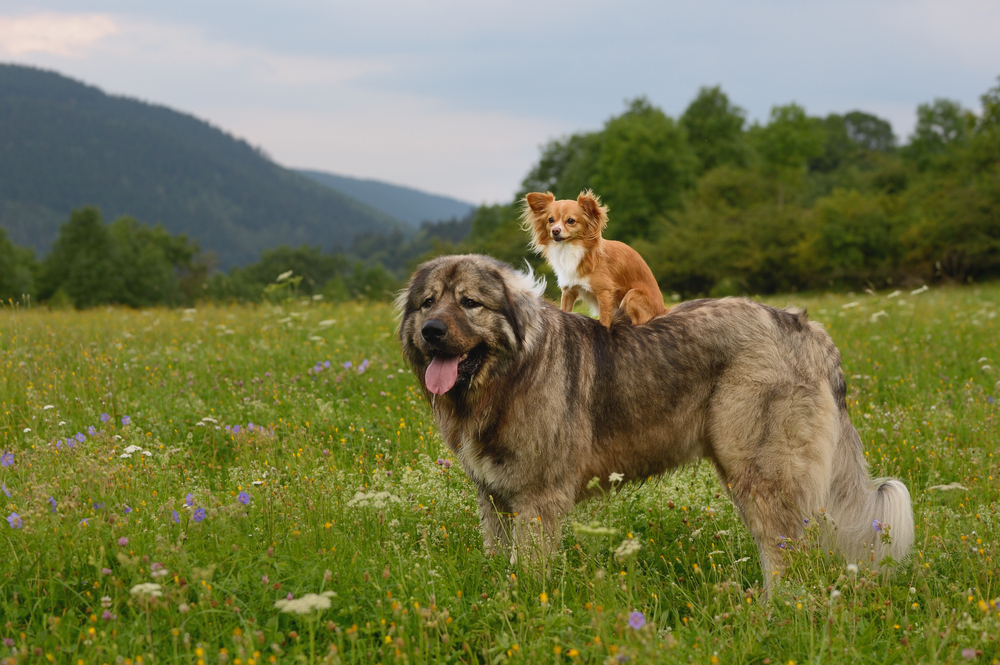
In the animal kingdom, the general rule is that the bigger you are, the longer you live. Elephants and whales are one of the longest living groups of animals on the planet and the largest organisms on land and in the ocean, respectively. In contrast, mice and other rodents have much shorter lifespans.
However, one strange counterexample is the contrast in life expectancy between different sized dog breeds. Large dogs are known to not live as long as their smaller relatives. For example, mastiffs weighing up to 230 pounds live 6 to 10 years, while Chihuahuas, which never weigh more than 6 pounds, live 14 to 16 years (data from American Kennel Club).
There is also a deeper paradox in the concept of aging, says Jack da Silva from the Department of Molecular and Biomedical Sciences at the University of Adelaide. “It’s certainly much easier for you to stay in peak physical shape throughout your life than to develop from a fertilized egg into a complex, multicellular adult,” says da Silva.
So why did aging evolve, he asks? He thinks the differences in lifespan seen in different dog breeds may help researchers answer why.
The different theories of aging
Our intuitive answers to why we age usually point to the impact that life has on our bodies. Over time, our bodies break down due to wear and tear. But this explains how we age, not why, and there is an important difference. Some species have evolved to live much longer than others, so why shouldn’t all species evolve to live longer if aging can be avoided?
Natural selection
According to da Silva, the answer has to do with the fact that natural selection weakens with age. Since we are more likely to be alive in one year than in two, due to the increased chances of accidental death or contracting an infectious disease, genetic mutations will have a greater impact on an individual while he is young and likely still to be alive than when they are old. This leads to two main theories about the evolution of aging, says da Silva.
A theory of mutation accumulation
“Mutations that are unfavorable are less likely to be removed from the population by selection if they only act at an older age. Thus, mutation accumulation theory explains aging as an accumulation of deleterious mutations that act at an older age,” he says.
Life history optimization theory
According to da Silva, “any investment made in growth and reproduction cannot also be made in maintaining body condition. Therefore, as selection weakens with age, you maximize the number of offspring produced by growing fast and reproducing at a young age, rather than keeping your body in peak physical condition. It is life history optimization theory of aging.”
Read more: The origin of dogs
Why do small dogs live longer?
Recently, yes Silva collected data on 164 dog breeds in an attempt to better understand the reasons for these life expectancy differences. The data includes information on adult body mass, newborn mass, at what age breeds reach 50 percent of their adult mass, litter size, average age of death, cause of death and the distribution of dogs at different ages for each breed.
Selective breeding
The authors found that the declining lifespan of breeds with increasing body size is most likely due to recent selective breeding for larger size acting through increased early growth. But what does that mean?
Rather than devoting resources to general body maintenance, selection for larger body size prioritizes resources for early growth, which is reflected in the fact that larger breeds suffer from more physical ailments from age two onwards (after reaching adult size).
Mutations
In addition, mutations that increase body size in dogs and laboratory mice also increase the risk of cancer. This relationship makes sense when we consider that most cancers result from mutations that occur during cell division, with larger individuals having more cell divisions for such mutations to occur.
According to da Silva, the evidence suggests that larger breeds have shorter lifespans due to investing resources in early growth rather than body maintenance (which includes cancer defenses such as repairing DNA copying errors and fighting cancer cells), and the fact that larger dogs tend to have larger litters supports the life history optimization theory of the evolution of aging.
This theory also suggests that over time, larger dogs should develop better defenses against cancer, longer lives, and smaller litters. A compromise we think owners of large dog breeds will be happy with.
Read more: How a contagious canine cancer spread around the world

